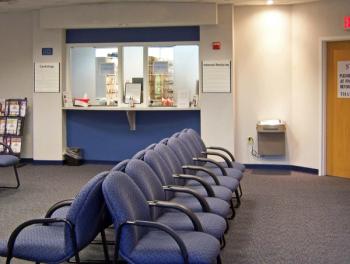
How ABMS, other specialty boards are confronting MOC changes
Leaders of the American Board of Medical Specialties (ABMS) and its member boards say they’ve been searching for the right path since deciding to take the MOC process beyond the once-per-decade requirement and add elements like subspecialty tests and patient ratings to the process.
Leaders of the
“We heard physicians didn’t like the
The ABIM updated its MOC exam last fall by asking practicing doctors to review the blueprint and make sure questions reflected what they were seeing in their practices. “We’re certainly hearing that some people say it covered obscure things, but we’re hearing many more people say it had a good reflection of what they see in their practice,” Baron says. “There was a sense that people may have felt more comfortable with what was on it.”
The American Board of Anesthesiology (ABA) has unveiled what it calls Maintenance of Certification in Anesthesiology Program (MOCA) 2.0. It replaces the once-per-decade exam with a requirement of 30 exam questions per quarter, based on feedback from physicians that they previously did nothing about MOC for 9½ years and then crammed for the exam, says James Rathmell, MD, board secretary for the ABA.
“The biggest discontent was that the exam doesn’t help diplomates to stay current and take care of patients,” he says. “What came up is that, ‘If we were fed information a little bit at a time, every day or every week throughout a 10-year cycle, and then if we got things wrong, the system would tell us why, and give us information to study and learn, and then test us at a regular interval.’ That’s what MOCA 2.0 is.”
The American Board of Emergency Medicine (ABEM) received strong criticism that the patient safety module it developed in conjunction with the American College of Emergency Physicians, was too time-consuming, hard to pass and irrelevant to day-to-day practice, says Barry Heller, MD, ABEM president. So it has suspended that module to revise it and make it more relevant.
The ABEM also altered its practice improvement standards to include a wider variety of diagnoses that are not necessarily seen in the emergency department every day, Heller says. “We’ve made plenty of changes, and we’ve not had quite the pushback that many of the others boards have had,” he says.
Teirstein and his supporters acknowledge the reforms among the ABMS boards but still have questions and complaints. For example, Teirstein charges that ABIM and others boards still have a “conflict of interest” in that they stand to earn money from exams and other MOC requirements; and that while the ABA’s MOCA 2.0 is “inventive,” for example, “they didn’t change the cost at all.
“We’re listening. We’re trying to reinvent this,” he says. “Take the money out of it, and see what you come up with. We don’t make any money. We’re designed not to make money.”
Geoffrey Rose, MD, chief of cardiology at Sanger Heart & Vascular Institute in Charlotte, North Carolina notes that if a doctor wanted to maintain certifications in internal medicine, cardiology and a subspecialty, that could amount to three exams within a decade. “You see how the requirements start to build up,” he says, adding: “I don’t think the final shot has been fired on this whole affair. I think the temperature has certainly cooled. It has been defused. But I don’t think we necessarily know the right and clear path forward.”
Newsletter
Stay informed and empowered with Medical Economics enewsletter, delivering expert insights, financial strategies, practice management tips and technology trends — tailored for today’s physicians.















